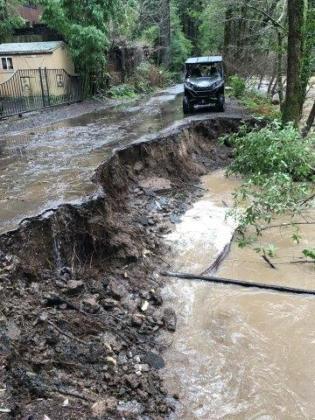Transportation Funding: The Time is Now!
When you’ve had a career in public policy as long and as varied as mine, certain issues rise above others in their significance. Long before I was elected to serve on the Sacramento County Board of Supervisors, safe, effective, and environmentally responsible transportation was one of those issues. Now, in 2017, we again have crucial policy decisions to make to ensure something as simple and basic, yet vitally central to our economy and quality of life, as fixing potholes.
Let’s be honest. In many places across California, we depend on a transportation system that is decades old. Streets and roads, transit buses and trains, bridges and highways, are 50 or more years old. Over time, we’ve invested far too little into maintaining our system. Deterioration and decay have reached epic dimensions in too many places. Each one of us knows where there are gaping potholes we steer around or hope our train or bus won’t break down on the way home.
Californians are paying an average of more than $750 a year in additional car maintenance because the roads are in such bad shape. Worse still, as the effects of this winter’s storms have shown us, by not spending enough to maintain our transportation system, we have experienced dramatic disruptions in our network. CalTrans estimates it needs to spend $770 million for emergency repairs alone, and cities and counties have at least an additional $400 million in storm damage from this winter. The cost to replace a road is about eight to ten times the cost of routine maintenance. If we don’t act now, the system will only get worse, costs will only go higher, and our ability to get where we need to go will only become more difficult.
That’s why I have joined so many of my former colleagues in local and state government to support a funding solution to fix our roads and support our transportation system. SB 1 by Senator Jim Beall and AB 1 by Assemblymember Jim Frazier have been introduced, as has a plan by Governor Brown. It’s likely the three proposals will be combined into one to be considered by the Legislature. Although the precise details aren’t available yet, we anticipate that the compromise will include an increase in the gas tax and some other fees to generate enough revenue to make a real dent in the growing maintenance backlog. Accompanying legislation will include constitutional protections so the new revenue will be spent as intended: on transportation projects.
I know no one wants to hear that their taxes may go up. But keep in mind that the gas tax hasn’t been raised since 1994. Since then, the cost of road construction has doubled. Inflation is up more than 60 percent. California has added 7,836,943 more people and we increased the number of miles we drive by
57.4 billion per year. But due to inflation, increased fuel economy, and a growing number of alternative-fueled vehicles, the revenue produced by the gas tax has stayed flat. At the same time, the wear and tear on our roads has worsened, so we now have a maintenance backlog of more than $130 billion for our state and local highways, roads, and bridges.
Everyone agrees that our roads are in terrible shape. But we can make a huge difference – if we grab this window of opportunity to make the first real ongoing additions to transportation funding in more than 20 years. The time is now, and the Governor and legislative leaders have set a goal of April 6 to have a bill through the Legislature. If we don’t take advantage of this opportunity, it may be years before we get another chance to act. The result would be even worse roads and greater cost to fix them.
As a Sacramento County Supervisor and as a State Assemblymember, I had the good fortune to work with colleagues who were focused on solving problems rather than serving ideology. While current times have brought increased polarization, the need to address our crumbling transportation system presents the opportunity to work together to make a significant investment in a better transportation future. We have the power to improve safety and mobility, to reduce vehicle maintenance costs, to create more good jobs that will boost our economy, and make it easier to move goods to market and get people where they want to go. We can do it!













































